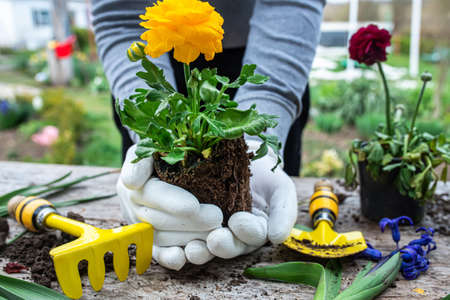Understanding Seasonal Changes and Your Indoor Plants
Indoor plants may live inside, but they still respond to the changing seasons just like outdoor plants. From winter’s short days and dry heat to summer’s bright sun and increased humidity, each season brings unique challenges and needs for your indoor greenery. Understanding how these seasonal shifts affect your plants is key to keeping them happy and healthy year-round.
How Seasons Affect Indoor Plant Care
Even though the temperature inside your home stays fairly consistent, light levels, humidity, and plant growth cycles change with the seasons. Heres a quick look at what typically happens indoors from winter to summer:
| Season | Light | Water Needs | Humidity | Plant Activity |
|---|---|---|---|---|
| Winter | Low natural light | Less frequent watering | Dry air due to heating | Dormant or slow growth |
| Spring | Increasing daylight hours | Slightly more water needed | Moderate humidity | New growth begins |
| Summer | Bright, intense light | More frequent watering | Higher humidity (varies by region) | Active growth period |
Reading Your Plants’ Signals
Your plants will often tell you what they need—if you know what to look for. Here are some common signs and what they might mean:
| Plant Sign | Possible Cause |
|---|---|
| Browning leaf tips in winter | Low humidity or overwatering |
| Pale leaves in spring or summer | Too much direct sunlight or nutrient deficiency |
| Drooping leaves during hot months | Lack of water or heat stress |
| No new growth in spring/summer | Poor lighting or root-bound plant needing repotting |
The Importance of Seasonal Awareness
Caring for indoor plants is not one-size-fits-all throughout the year. By adjusting your plant care routine as seasons change—from reducing water in the winter to increasing light exposure in spring—you’ll help your plants stay vibrant and thriving through every season.
Quick Tip:
If youre unsure about how much light your plant is getting, try using a light meter app on your smartphone or simply observe how much natural sunlight reaches different parts of your home during the day. This can help you decide when its time to move a plant closer to a window or provide supplemental grow lights.
Stay tuned for Part 2 where we’ll dive into specific care tips for indoor plants during the winter months!
2. Winter Care: Light, Humidity, and Dormancy
During winter, indoor plants face unique challenges due to shorter daylight hours, dry indoor air, and natural dormancy cycles. Adjusting your care routine can help your plants stay healthy and strong through the colder months.
Light: Making the Most of Shorter Days
In winter, sunlight is limited and weaker. Position your plants near south or west-facing windows to maximize light exposure. Rotate pots weekly so all sides receive light evenly. If natural light isnt enough, consider using a grow light for 10–12 hours a day.
Tips for Winter Lighting:
- Clean windows regularly to let in more light.
- Avoid placing plants too close to cold windows to prevent frost damage.
- Use sheer curtains to diffuse harsh midday sun if needed.
Humidity: Combating Dry Indoor Air
Indoor heating systems can cause low humidity levels that stress tropical and moisture-loving houseplants. Signs include brown leaf tips and crispy edges. To maintain healthy humidity levels, try the following methods:
| Method | Description |
|---|---|
| Humidifier | Adds moisture to the air efficiently for multiple plants. |
| Pebble Tray | Place a tray filled with water and pebbles under the pot—evaporation increases humidity around the plant. |
| Misting | Mist leaves lightly with water every few days (not suitable for all plants). |
| Grouping Plants | Bunching plants together creates a microclimate with shared humidity. |
Dormancy: Slowing Down Is Normal
Many houseplants naturally go dormant or enter a slower growth phase during winter. This means they need less water and little or no fertilizer. Overwatering is one of the most common mistakes during this time.
Caring for Dormant Plants:
- Water less often: Only when the top inch of soil feels dry.
- No fertilizing: Wait until spring when growth resumes.
- Avoid repotting: Disturbing roots during dormancy can stress the plant.
If your plant looks less vibrant or drops a few leaves, don’t worry—it’s likely just resting until spring returns with more warmth and light.

3. Spring Transitions: Waking Up Your Plants
As the days get longer and temperatures start to rise, your indoor plants will naturally begin to wake up from their winter dormancy. This seasonal shift is the perfect time to adjust your care routine to support healthy new growth. Heres how you can help your plants transition smoothly into spring:
Start Reintroducing Fertilizer
During winter, most houseplants slow down their growth and don’t need much feeding. But come spring, they’re ready for nutrients again. Start by using a balanced, water-soluble fertilizer at half strength once a month. As the season progresses and growth picks up, you can gradually return to a regular feeding schedule.
Fertilizer Schedule Guide
| Month | Fertilizer Frequency | Strength |
|---|---|---|
| March | Once a month | Half strength |
| April | Every 2-3 weeks | Half to full strength |
| May | Every 2 weeks | Full strength |
Bump Up the Watering
Your plants will also start using more water as they grow faster in spring. Check the soil more frequently—if the top inch feels dry, it’s time to water. Be careful not to overwater; always make sure pots have drainage holes and empty saucers after watering.
Time for Repotting?
If your plant has outgrown its current pot or you notice roots growing out of the drainage holes, spring is the best time to repot. Choose a pot that’s one size larger and use fresh potting mix suited for your specific plant type.
Sings Its Time to Repot:
- You see roots circling the surface or coming out of the bottom
- The soil dries out very quickly after watering
- Your plant looks top-heavy or unstable in its current container
A little extra attention during this season goes a long way. With proper feeding, watering, and possibly a fresh new home, your plants will reward you with lush, vibrant growth all spring long!
4. Summer Strategies: Managing Heat and Growth Spurts
Summer is the season when your indoor plants really come alive! With longer daylight hours and warmer temperatures, most houseplants enter a period of rapid growth. But with that growth also comes some challenges—like keeping up with watering, controlling pests, and making sure your plants don’t get scorched by too much sun. Here’s how you can help your green friends thrive through the summer months.
Keep Up with Watering (But Don’t Overdo It)
Indoor plants tend to dry out faster during the summer due to higher temperatures and increased light. However, overwatering can still be a problem. The key is to water deeply but less frequently, allowing the soil to dry slightly between waterings.
| Plant Type | Watering Frequency |
|---|---|
| Tropical Plants (e.g., Monstera, Peace Lily) | Every 5–7 days |
| Cacti & Succulents | Every 10–14 days |
| Ferns & Moisture-Loving Plants | Every 3–5 days |
Tip: Use your finger to check if the top inch of soil is dry before watering.
Pest Patrol: Catch Issues Early
The warm weather can invite unwanted guests like spider mites, aphids, and fungus gnats. Keep an eye on your plants by inspecting the undersides of leaves and stems weekly.
Pest Control Tips:
- Neem oil spray: Great for organic pest control; apply every 7–10 days.
- Diatomaceous earth: Sprinkle on soil to deter gnats and other insects.
- Sticky traps: Place near soil surface to catch flying pests.
Avoid Sunburn: Filter That Summer Sun
You might think more sunlight is always better, but direct afternoon sun through windows can actually scorch indoor plant leaves. Move sensitive plants away from south-facing windows or use sheer curtains to filter the light.
| Sensitive Plants | Sunlight Recommendation |
|---|---|
| Pothos | Bright, indirect light |
| Anthurium | Dappled or filtered sunlight |
| Sansevieria (Snake Plant) | Tolerates low to bright indirect light |
Bonus Tip: Rotate your plants every couple of weeks so they grow evenly and don’t lean toward the window.
Nutrient Boost for Growing Season
This is a great time to feed your plants as they’ll be using more energy to grow new leaves and roots. Use a balanced liquid fertilizer diluted to half strength once or twice a month.
- NPK Ratio: Look for something like 10-10-10 or 20-20-20.
- Avoid over-fertilizing: Too much can burn roots or cause salt buildup in soil.
5. General Tips for Year-Round Indoor Plant Health
Keeping your indoor plants healthy throughout the year means adjusting your care routine as the seasons change, while also sticking to some consistent habits. Whether it’s sunny summer days or chilly winter nights, your plants need regular attention to stay strong and vibrant.
Stay Consistent with Basic Care
Even though plant needs shift with the seasons, some care practices should remain steady:
- Watering: Always check soil moisture before watering. Overwatering is a common problem, especially in cooler months when plants grow more slowly.
- Cleaning: Wipe dust off leaves regularly to help them breathe and absorb light better.
- Pest Checks: Look for signs of pests like gnats or spider mites, especially when moving plants indoors or outdoors.
Adjust Lighting Through the Seasons
Your indoor plants rely on natural light, which changes throughout the year. Make small shifts in placement to keep them happy:
| Season | Lighting Tips |
|---|---|
| Winter | Move plants closer to windows; clean glass to maximize light exposure. |
| Spring | Gradually introduce more sunlight; rotate pots weekly for even growth. |
| Summer | Avoid direct harsh sunlight; use sheer curtains if needed. |
| Fall | Begin transitioning light-loving plants indoors; reduce sun exposure gradually. |
Match Watering to Seasonal Needs
The amount of water your plants need can vary depending on temperature and humidity levels. Heres a quick guide:
| Season | Watering Advice |
|---|---|
| Winter | Water less often; most plants go into a resting phase. |
| Spring | Increase watering as new growth starts to appear. |
| Summer | Check soil more frequently due to heat and evaporation. |
| Fall | Start reducing watering as temperatures drop. |
Create a Healthy Environment Indoors
Your home’s climate can impact plant health just like outdoor weather does. Try these tips:
Humidity Levels
- Tropical plants: Use a humidifier or pebble tray during dry winter months.
- Cacti and succulents: Prefer drier air, so avoid extra moisture nearby.
Temperature Control
- Avoid placing plants near heating vents or drafty windows.
- Keep indoor temperatures stable, ideally between 65–75°F (18–24°C).
Monitor and Adapt Regularly
The key to year-round plant health is observation. Check in with your plants weekly—look at their leaves, feel the soil, and notice any changes. Adjust lighting, watering, and placement as needed based on what you see. A little attention goes a long way!
This flexible approach helps you meet each plants needs no matter the season—and keeps your indoor garden thriving all year long.


